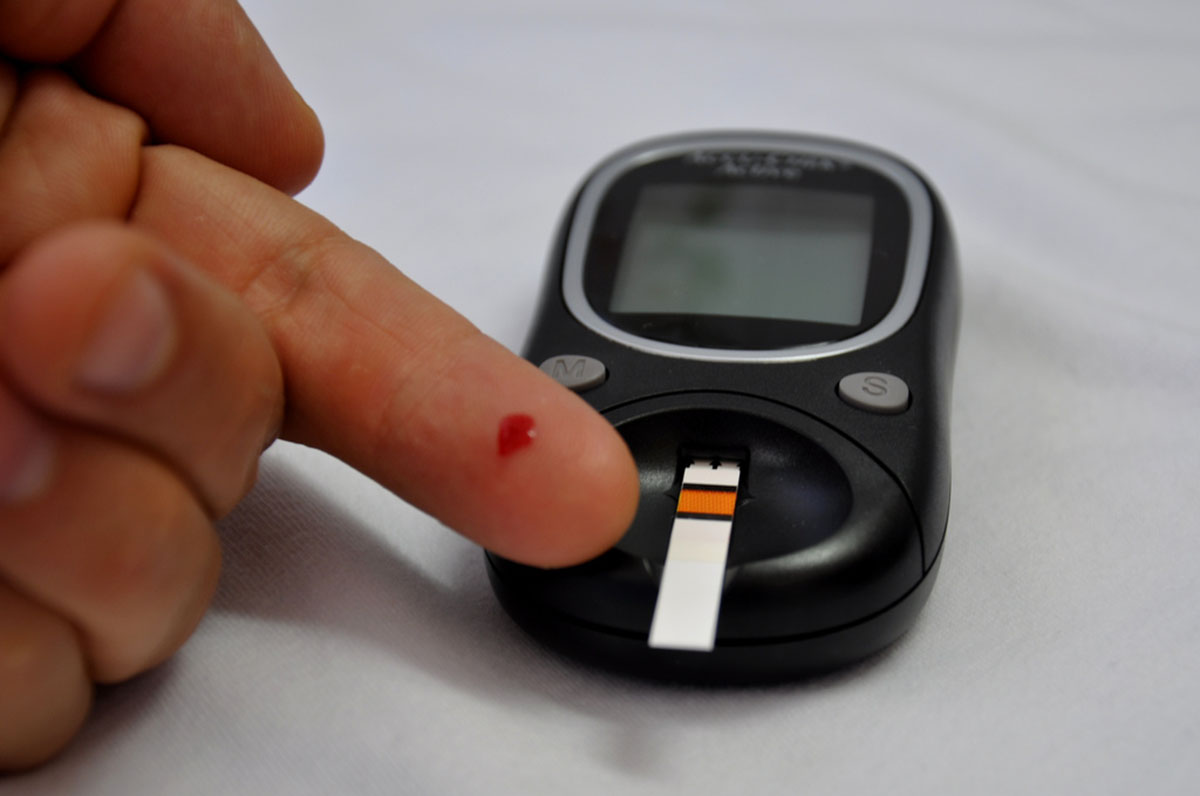More and more doctor's offices are abandoning in-office blood sugar testing with a finger prick to take a blood sugar reading. The cost of the test strip and the nurse's time adds about $7 to the doctor's office overhead, and doesn't usually provide useful information. However, this growing trend at doctor's offices doesn't mean that diabetics shouldn't be doing a lot of testing on their own. The simple truth is, diabetics tend not to keep their blood sugar levels in check.

There are slight differences from clinic to clinic and from study to study, but an "average" HbA1C number for an American diabetic is about 9.1 percent. That roughly corresponds to an "average" blood sugar level of 220 mg/dl (the measurement used in the United States) or 12 mmol/L (the measurement used in most of the rest of the world).
Even an HbA1C of 6 percent, which corresponds to an average blood sugar level of 122 mg/dl or 7 mmol/L has an increased risk of complications.
The bottom line is, most diabetics need to do better to keep serious complications from popping up after they have had the disease for five, ten, or fifteen years. Diabetics need to achieve an HbA1C level of 6.0 percent or lower, which means keeping blood sugar levels at 105 to 110 mg/dl (5.5 to 6.0 mmol/L) on average 24 hours a day.
When Diabetics Need to Test, Test, and Test Some More
Type 2 diabetes is an insidious disease. At first the pancreas can't keep up with the body's need for insulin in the one or two hours immediately after meals, but it can usually catch up overnight. Screening tests for diabetes usually rely on fasting blood sugar levels, so the earliest stages of the disease are not detected.
READ Twenty Healthy Snacks for People with - and without - Diabetes
The problem is that every time that blood sugar levels exceed 170 mg/dl (10.0 mmol/L), cells all over the body shut down receptor sites for insulin to avoid being flooded with sugar. In the process, they become insulin resistant. This makes the pancreas work just a little harder to get blood sugar levels back to normal overnight. By the time the pancreas is so worn out, or, as endocrinologists explain it, beta cells become depleted, that even fasting blood sugar levels are high, the disease is progressed nearly so far it can't be reversed, it can only be treated.
Why Wouldn't a Diabetic Diet Take Care of the Need for Blood Sugar Testing?
The main reason diabetic diets don't work is that diabetics usually don't follow them. They allow themselves a piece of candy here or a slice of cake (or a quarter of a cake or half of a cake or a whole cake) there. They forget their second helpings and their extra carbs.
READ Diabetes: Early Signs & Symptoms You Can't Ignore
If you test your blood sugar levels five times a day, there's no overlooking the effects of diet, or failure to follow diet. However, not every diabetic needs to test quite that often.
Controlled Diabetics Can Slack Off Their Blood Sugar Testing (a Little)
Once a diabetic has met goals for at least long enough to bring HbA1C levels down to goals, which usually takes 90 days or so, then it is OK to consider testing less. Unless a patient is instructed otherwise by their physician, here are the guidelines that work to keep blood sugar numbers in control.

A type 2 diabetic who really controls blood sugar levels with diet, exercise, and maybe a single medication like metformin might test blood sugar levels just twice a week, once in the morning while still fasting, and once after a meal. If both numbers are within the doctor's guidelines, then it's OK to continue testing just twice a week, one fasting test, and one post-prandial test. Doctors usually look for fasting numbers below 120 mg/dl and post-prandial numbers below 170 mg/dl.
A type 2 diabetic who is has more than one medication, or who hasn't achieved HbA1C goal, probably needs to test twice a day, once while fasting and once after a meal. These numbers are a good indicator of any need for fine tuning of the diet plan or medication. It's absolutely essential to test after at least one meal to know blood sugar levels aren't ever going over about 170 mg/dl, the level at which insulin resistance, and the severity of the disease, increase.
Type 2 diabetics who take insulin can get away with not testing five times a day if an only if they carefully follow their diabetic diets and get predictable amounts of exercise every day. For them, it may be OK to test just two or three times a day. However, it's essential to test:
- At least one fasting blood sugar level, shortly after rising to start the day.
- At least one post-prandial blood sugar level, after the largest meal of the day.
- Whenever you do a hard work out or you spend an extended time in physical activity.
It's every bit as important to avoid lows as highs.
READ Does Diabetes Impact Cognitive Abilities?
In the era when glucometers were new and test strips were exorbitantly expensive, doctors might tell type 1 diabetics to test until they knew how their bodies reacted to specific types and amounts of food and specific types and lengths of exercise. Even so, stress and infection could run up numbers and hitting a vein with an insulin injection could run them down. In the "old days," nearly all type 1 diabetics developed complications early in life and life-threatening complications were common. Even now, when test strips are covered by insurance, it's simply better to catch mistakes early on by testing frequently.
And that's true for any case of diabetes. The more often you test, the less likely you are to make catastrophic mistakes. If you have to save on test strip expense, and you have type 2, test less often. But if you have type 1 diabetes, seek sources of test strips that match your budget. Small mistakes are always easier to correct.
- James L. Wofford, MD, MS
- Melanie J. Martin, MD
- Claudia L. Campos, MD. Eliminating Routine Glucometer Readings in the Office Setting: Correcting a Foolish Consistency. JAMA Intern Med. Published online September 26, 2016. doi:10.1001/jamainternmed.2016.5769.
- Photo courtesy of v1ctor: www.flickr.com/photos/v1ctor/10871254373/
- Photo courtesy of Michael Stern: www.flickr.com/photos/68711844@N07/15204286153/
- Photo courtesy of v1ctor: www.flickr.com/photos/v1ctor/10871254373/

